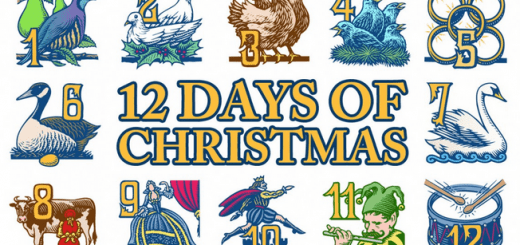O Come, O Come, Emmanuel
This is a popular Christmas hymn which is also associated with the observance of Advent, a season formally recognized by some Christians. O Come, O Come, Emmanuel is also one of the oldest Christmas carols we have looked at thus far, as its traces origins all the way back to at least the 9th century. The Latin version which has become the basis of the song as we know it today is believed to have been composed circa the 11-12th centuries, eventually being made popular by German churchgoers beginning in the 16th century.
It is from that rendition first published by the Germans that John Mason Neale (1818-1866), a prominent British priest and hymn writer, translated this song into English in the mid-19th century. His translation is the one most widely used amongst Anglophones to this day. And it was expanded upon by an American counterpart, Henry Sloane Coffin (1877-1954), in the early-20th century.
The way the lyrics of O Come, O Come, Emmanuel are structured are such that a variety of instrumentals – or tunes or melodies as they are called in the hymnal world – can be applied to them. But the standard, as established circa the time that Neale translated the lyrics, has become a tune known as Veni Emmanuel which, it was eventually discovered, dates back to at least 15th century France. And as these stories tend to go, once O Come, O Come, Emmanuel became associated with the melody that fit, i.e. Veni Emmanuel, the pair, coupled together and taking on the name of the lyrics went on to achieve wider renown, beginning with the song’s acceptance into English (i.e. British) church circles.
Facts about the Song
O Come, O Come, Emmanuel or more specifically Veni Emmanuel was used as the instrumental basis of U2’s 2009 track White as Snow.
Amongst the popular musicians who are on record as having covered O Come, O Come, Emmanuel are Linda Ronstadt (2000), Sufjan Stevens (2001, 2006), Enya (2008), Jessica Simpson (2010) and Kelly Clarkson (2013).
Lyrically, this song originated as an antiphon, i.e. a chant, which was practiced during the week leading up to Christmas, apparently by European monks.
The Lyrics
There’s a prophecy in the Old Testament, in the Book of Isaiah to be exact, which reads (based on the King James translation) that “the Lord Himself shall give you a sign. Behold, a virgin shall conceive and bear a son and shall call his name Immanuel”. Many people believe that prophecy was fulfilled with the birth of Jesus since, as the story goes, he was indeed born to a virgin. He wasn’t named Immanuel, but he did fulfill the meaning of the word, as it translates to “God with us”. As such, the only time outside of the Book of Isaiah that name is found in the Bible is in Matthew 1, i.e. one of the chapters detailing the birth of Jesus.
The reason we’re pointing that out is because that is the selfsame “Emmanuel” referenced in this song. That said, this isn’t about the story of Jesus. The lyrics do not recount specific aspects of his life like some other well-known Christmas carols do. Instead, they focus more on the ideological implications of his presence.
Going back to the concept of the Advent mentioned earlier in this post, people who adhere to that belief not only celebrate Jesus’s birth thousands of years ago but also look forward to what is known as the Second Coming, i.e. his prophesied return, which will bring about a world government, if you will, run by God. So as foretold, that will be a period of unprecedented peace. And comprehensively, that is the concept that these lyrics are speaking to.
Jesus, even under his own initial estimation, was sent into the world specifically in the name biggin’ up the Israelites. That is what lyrics also allude during the first three verses of the hymn especially, how he was associated with the history, lineage, suffering and prophecies of those specific people.
But eventually his mission took on a wider, global scope, one which transcends time and is meant to bring salvation to the entire world. And even though the refrain of O Come, O Come, Emmanuel specifies Israel as the addressee, it can also be ascertained that the latter verses speak to Jesus’s wider destiny as noted above. Or another way of looking at it is as his earthly ministry so many years ago having fulfilled one set of prophecies, but there are others which are expected to come true once “the King of Peace” returns during what religious folks call the end of the world. And this particular song speaks to both of those sets of prophecies, intermixing them as well. And as the title implies, the vocalist is actually looking forward to the Second Coming.
So in a way, it can be argued that O Come, O Come, Emmanuel is a Christmas carol in the truest sense of the word. In other words the lyrics really focus on what the main figure behind the holiday, Jesus, is meant to represent, while some other popular carols rather emphasize his birth or the holiday season itself.








